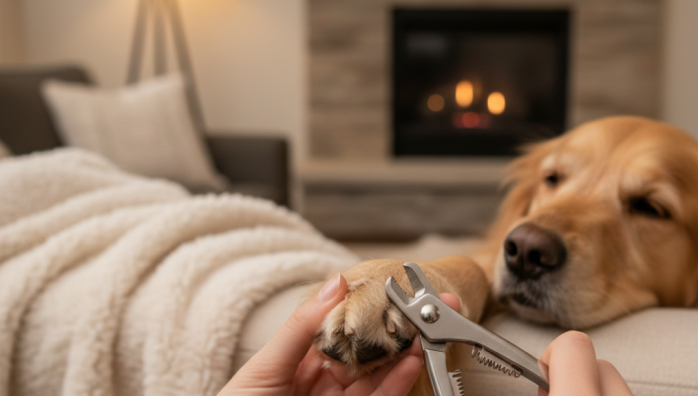Trimming Pet Nails at Home Safely
by admin in Pet Care Basics 22 - Last Update November 21, 2025

I remember the first time I tried to trim my dog\'s nails. My hands were shaking more than his tail was wagging. The thought of hurting him was terrifying, and honestly, that fear made the whole experience stressful for both of us. It took me years of practice, a few mistakes, and a lot of patience to turn nail trim day from a dreaded chore into a calm bonding moment. If you\'re feeling that same anxiety, I want to share what I\'ve learned on my journey.
Why skipping nail trims is a bad idea
Before we get into the \'how,\' it\'s important to understand the \'why.\' I used to think, \'He runs outside, don\'t they wear down naturally?\' While that helps, it\'s rarely enough. Overly long nails can be painful. They can force your pet\'s toes into an unnatural position, leading to joint pain or even arthritis over time. They\'re also more likely to split or get snagged, which is an emergency I\'ve thankfully managed to avoid. For me, regular trims are a non-negotiable part of responsible pet care.
Gathering the right tools for the job
Having the right equipment made a world of difference for me. Rushing to the drawer only to find dull clippers just adds to the stress. Here’s my go-to kit, which I keep in a dedicated little box.
Clippers vs. grinders: my take
There are two main styles of tools: the guillotine-style or scissor-style clippers, and the electric nail grinders. I started with clippers because they\'re quick and quiet. However, once I got a dog with dark, thick nails, I switched to a grinder. It gives me more control and allows me to file the nail down slowly, reducing the risk of hitting the sensitive part. It\'s a bit noisier, so it took some time to get my pets used to it with lots of treats and praise. The choice really depends on your comfort level and your pet\'s temperament.
Don\'t forget the styptic powder
This is my number one must-have. Styptic powder is a clotting agent that will quickly stop the bleeding if you accidentally cut the quick. Even after years of practice, accidents can happen. Having this on hand gives me peace of mind, which in turn helps me stay calm during the trim.
A step-by-step guide to a calm trim
My process is all about creating a calm, predictable routine. Rushing it is the fastest way to create a negative association for your pet.
- Create a calm environment. I always do this in a quiet room when my dog is already relaxed, maybe after a nap. I sit on the floor with him and have high-value treats ready.
- Know the anatomy (the quick). The \'quick\' is the blood vessel and nerve that runs into the nail. On light-colored nails, it\'s the pink part you can easily see. On dark nails, it\'s invisible. This is where my biggest fear used to come from.
- The \'salami slice\' technique. This was a game-changer for me, especially with dark nails. Instead of trying to take a big chunk off, I trim a tiny sliver at a time, like slicing a salami. As you get closer to the quick, you\'ll see a small, dark circle appear in the center of the cut nail. That\'s your signal to stop.
- Praise and reward. I don\'t wait until the end. I trim one nail, then offer a treat and praise. One paw done? More praise! This breaks the task up and keeps the mood positive.
What to do if you cut the quick
First, don\'t panic. It has happened to me, and your calm reaction is key. Your pet will look to you for how to feel. Simply take a pinch of styptic powder, press it firmly onto the nail tip, and hold it for about 30 seconds. The bleeding will stop. Give your pet a big hug, a tasty treat, and then stop for the day. Don\'t force them to continue. End on a positive note and try again another time.
Final thoughts from my experience
Learning to trim my pets\' nails at home has saved me money, but more importantly, it has strengthened our bond. It’s an act of trust. If you’re really struggling, there\'s no shame in seeking help. A professional groomer or your vet can give you a hands-on demonstration. Remember, this is what I’ve found works for my animals, but I always recommend chatting with your vet for guidance specific to your pet\'s needs.














